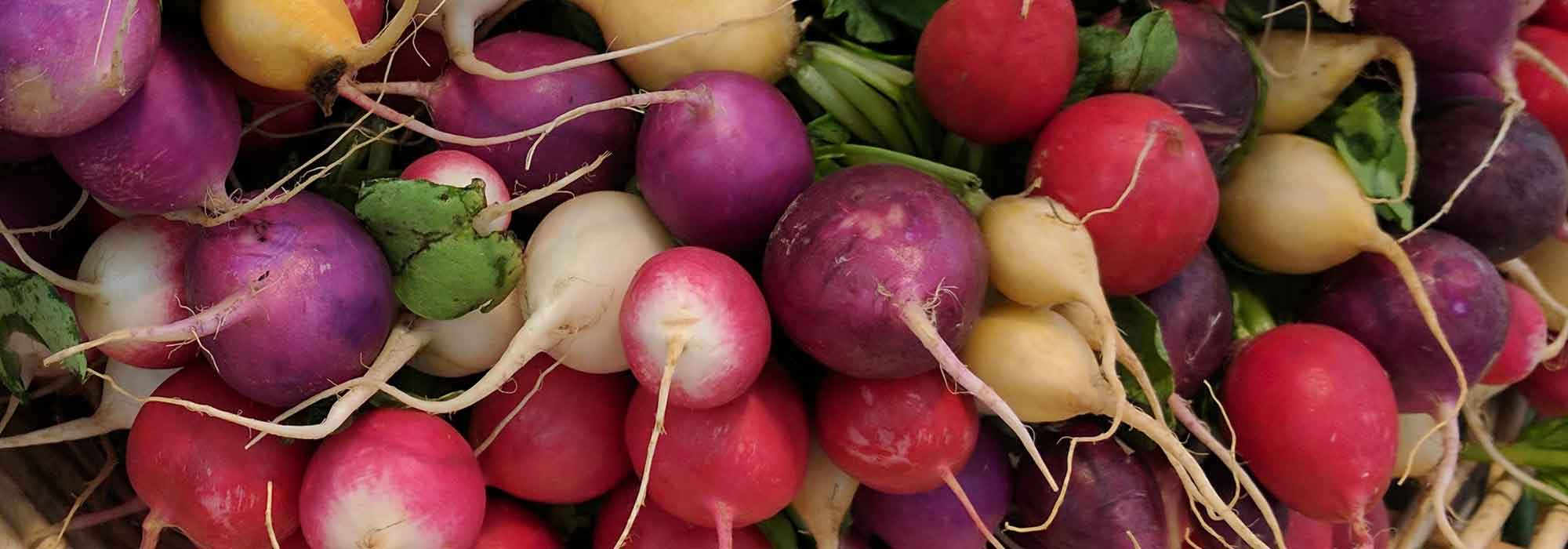
Radish: sowing, growing, harvesting
Contents
Radish in a nutshell
- Radish is a vegetable that enjoys cool, rich soil and full sun exposure.
- Radishes are classified into three types: monthly radishes, turnip radishes, and Asian radishes.
- The cultivation is quick, with the average time for small radishes being 35 days from sowing to harvest!
- The success of radishes relies on good management of watering and thinning.
- It is a refreshing vegetable that stimulates appetite, rich in trace elements and vitamins B and C.
The word from our expert
Radish is an annual or biennial root vegetable from the Brassicaceae family. It is quite hardy, primarily consumed raw, but the fresh leaves can also be used in soups. The radish is refreshing, appetising, and remineralising, and with a little care, its cultivation is relatively simple!
The radishes we consume in France are classified into three main types: monthly radishes, globe radishes, and Asian radishes. Among the monthly radishes, which have small roots, we find the famous ‘Pernot’, a very old variety with a semi-long root and a white tip. The ‘Flamboyant 5’ radish is a variety improvement that produces mildly spicy radishes. There are also colourful radishes like the ‘Amethyst’ variety, which has a purple epidermis. Globe radishes include varieties with long or thicker roots, such as the black radish ‘Gros long d’hiver de Paris’, which has a black epidermis and white flesh, and its taste is much stronger than that of the monthly radish. Finally, the Japanese radish or ‘Daikon’ features a long, white, conical root.
Radishes are grown in a sunny position for a large part of the year; in summer, we recommend growing them in partial shade to prevent them from bolting prematurely. The soil should preferably be fertile but free from any fresh organic matter, and well-draining, as watering must be regular. From sowing to harvest, proper management of watering and thinning will yield good, crunchy, and mildly spicy radishes: watering should be light and regular, ideally daily when the weather is fine and warm. Thinning should be done as soon as possible. Finally, staggering the sowings allows for harvesting radishes for a large part of the year.
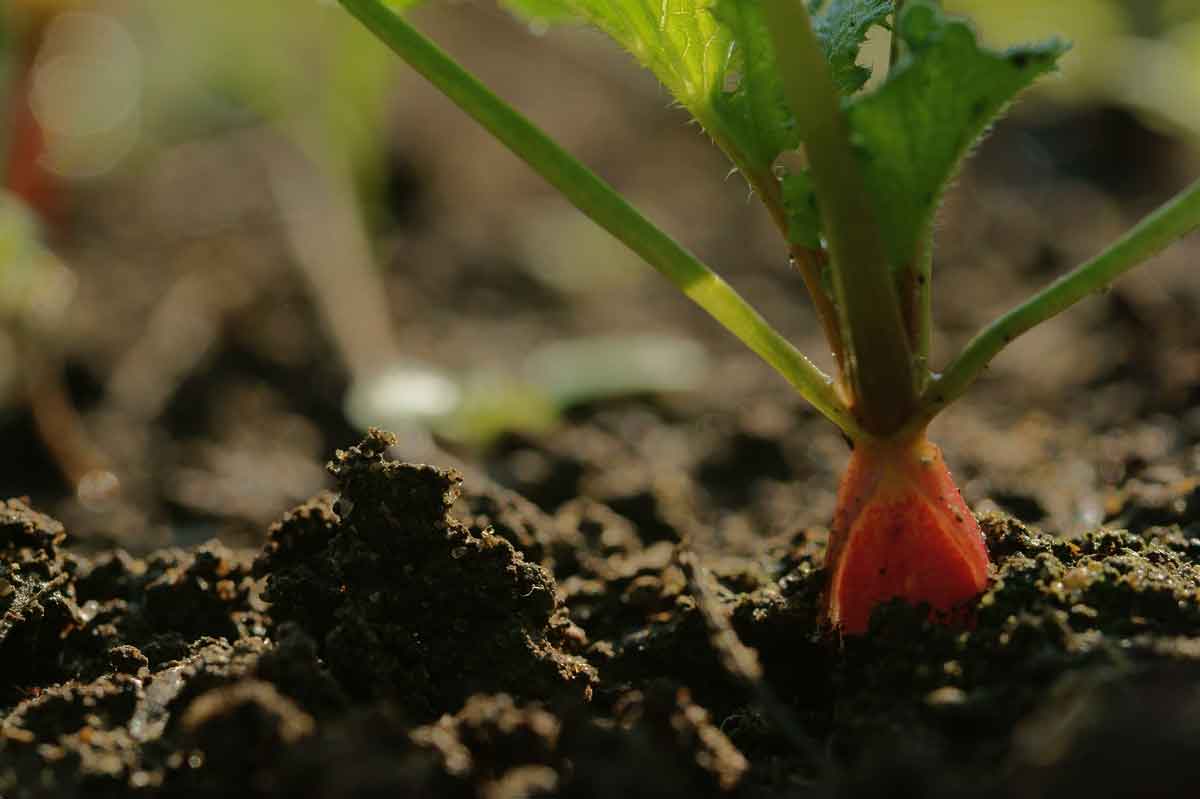
Description and Botany
Botanical data
- Latin name Raphanus sativus
- Family Brassicaceae
- Common name Radish
- Flowering Annual or Biennial
- Height 4 - 5 years
- Sun exposure Sun to partial shade
- Soil type Rich and draining
- Hardiness hardy
Radish is a plant that originates from the Mediterranean basin. It was cultivated by the Egyptians in 2800 BC, but was probably used for the oil of its seeds, and later by the Greeks, the Romans, in Asia, and in India. It was not until the 18th century that many varietal creations took place. Radish is believed to have been domesticated by humans through cross-breeding of wild radishes and four other closely related species present from the Near East to Europe, which allowed for the selection of the first radishes. This hypothesis was confirmed in the 19th century by Carrière, who allowed wild radishes from different biotopes to cross-pollinate freely, resulting in an increase in root volume over the years. Today, the species is divided into six cultigroups, three of which are particularly known and consumed in France:
- R. sativus var. sativus, the small radish or monthly radish, the most consumed radish in France.
- R. sativus var. niger, the large radish or black radish, which includes winter varieties like the black radish.
- R. sativus var. acanthiformis, the daikon radish, with a long fleshy white root.
There is also the cultigroup caudatus, known as Java’s mougri or snake radish, cultivated not for its root but for its siliques and consumed like green beans. The cultigroup oleiferus is cultivated to extract oil from the seeds.
Etymologically, the name “radish” comes from the Latin radix, which means root.
The radish, Raphanus sativus var. sativus, is an annual or biennial plant of the Brassicaceae family, formerly known as Cruciferae. This old name may have been more descriptive, as it referred to the arrangement of the petals in a cross. The radish forms a rosette of leaves, which vary in shape depending on the stage of development; they are more or less lanceolate and lobed. The stem is cylindrical and hollow and can reach up to a metre during flowering. The “root” that we consume is actually the hypocotyl, located between the base of the stem and the cotyledons, hypertrophied and tuberised. It can be small (for the monthly radishes), round or half-long to very long or rave, varying in size, with colours that are very diverse, generally with a white tip for the monthly radishes, and shades of pink, scarlet red, grey, black, yellow, and purple. The true root is located below the hypocotyl, starting on a straight taproot followed by secondary roots. The radish produces white to pink or violet flowers, veined with violet: four petals and four sepals arranged in a cross. The flower is particularly melliferous and nectariferous. It is allogamous and entomophilous. The fruit is a silique, varying in length up to 6 cm for European radishes and can measure up to 1.5 metres for the snake radish! For botanists, it is the shape of the silique that allows differentiation between the various species. Each silique contains 5 to 15 seeds that change from green to brown at ripeness.
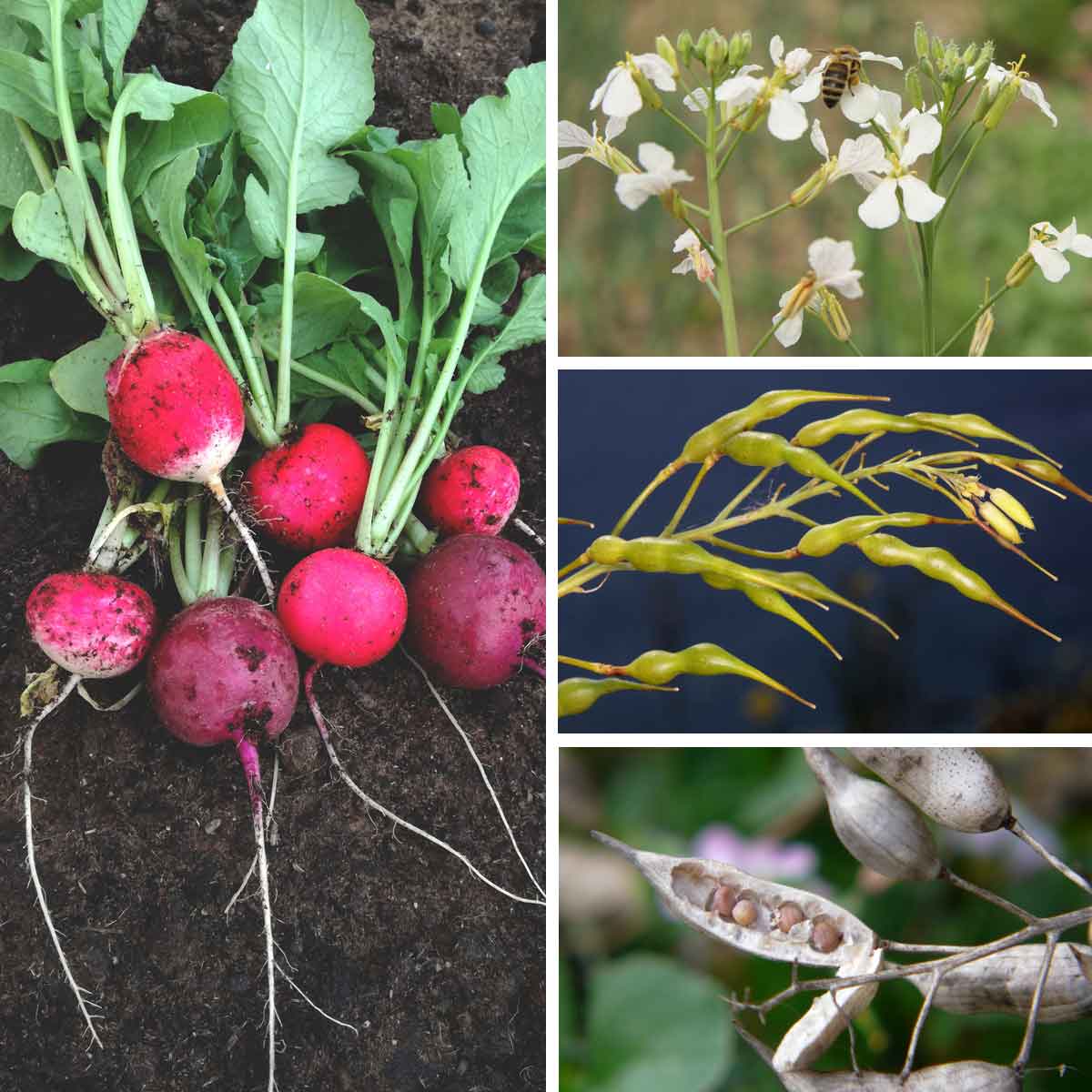
The radish in its entirety – leaves, tuberised hypocotyl, and taproot – Radish flowers arranged in a cross – Radish siliques – Radish seeds in a silique
Radish varieties
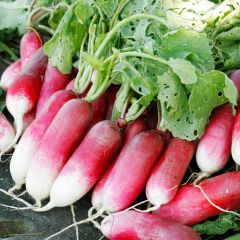
Radish De 18 Jours - Vilmorin Seeds
- Height at maturity 15 cm
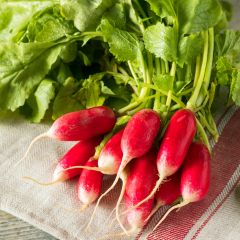
Radish Flamboyant 5 - Vilmorin Seeds
- Height at maturity 15 cm
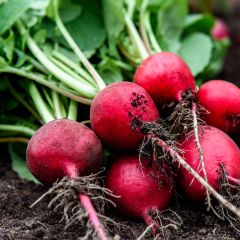
Radish Giant of Würzburg - Vilmorin Seeds
- Height at maturity 15 cm
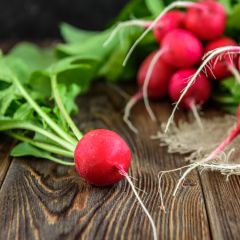
Cherry Belle Radish
- Height at maturity 15 cm
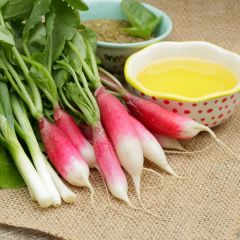
Half-long Apolo Radish - Vilmorin seeds
- Height at maturity 15 cm
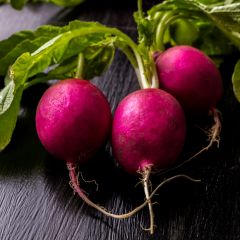
Radish Amethyst Radish
- Height at maturity 15 cm
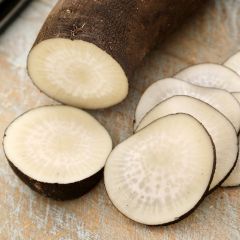
Rave Noir Gros long d'hiver de Paris Radish
- Height at maturity 25 cm
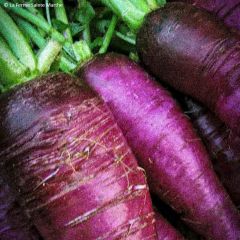
Radish Violet de Gournay - Ferme de Sainte Marthe Seeds
- Height at maturity 15 cm
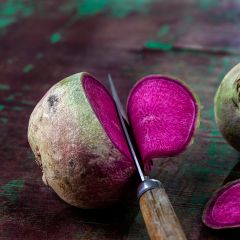
Radish Red Meat - Watermelon Radish
- Height at maturity 15 cm

Daikon Radish Summer Cross F1
- Height at maturity 25 cm
Discover other Radishes
View all →Available in 1 sizes
Available in 1 sizes
Available in 1 sizes
Available in 1 sizes
Available in 1 sizes
Available in 1 sizes
Available in 1 sizes
Available in 1 sizes
Available in 1 sizes
Sowing radishes
Radishes are among those vegetables that are not planted but sown directly into the soil in the vegetable garden.
Where and When to Sow Radishes?
Sowing radishes (monthly radishes, forcing radishes, as well as daikon and winter radishes) is easy to do. It is carried out directly in open ground from February to November, depending on the type and variety.
Radishes are not very demanding and thrive in all soils, although they prefer richer ones. They require sunlight to develop but fear a lack of water: a moist soil is therefore ideal. In the hottest regions and during summer, it is better to place them in partial shade. This is a low-maintenance crop that can be easily interspersed between rows or with other vegetables. Sowing simultaneously, in the same line, with carrots is a classic and effective combination.
Radish seeds germinate quickly (in 3 to 5 days) and sprout at temperatures as low as 7 °C.
Each variety corresponds to an ideal sowing period. You will find the precise information on the seed packet. But, generally speaking, radish sowing takes place:
- from February to the end of March, under a frame or tunnel, for forcing radishes
- from mid-March to mid-September for monthly radishes
- from May to the end of August for summer radishes and daikon
- from June to November for winter radishes
How to Sow Radishes?
Sowing is done in well-prepared soil: weeded, loosened, and then raked to obtain fine soil. To sow directly in open ground, in rows:
- Trace furrows spaced 15 cm apart for small radishes and 25 cm for large daikon and winter radishes. The depth of sowing varies depending on the type of radish: round radishes are sown at a very shallow depth, the seeds should be barely covered, while long radish seeds should be buried at a depth of 2 to 3 centimetres.
- Sow sparsely in rows, possibly mixing the seeds with sand or dry coffee grounds, spacing the seeds about 3 cm apart for small radishes and about 5 cm apart for daikon.
- Cover with fine soil, firm down with the back of the rake
- Proceed with a first watering, using a fine spray to avoid displacing the seeds
- Keep the soil moist until germination.
Radishes can also be sown using seed tapes: super simple! The seeds, pre-spaced, are enclosed in biodegradable paper. These tapes sometimes contain several varieties or the radish seeds are combined with carrot seeds. Sowing involves burying the tape and watering.
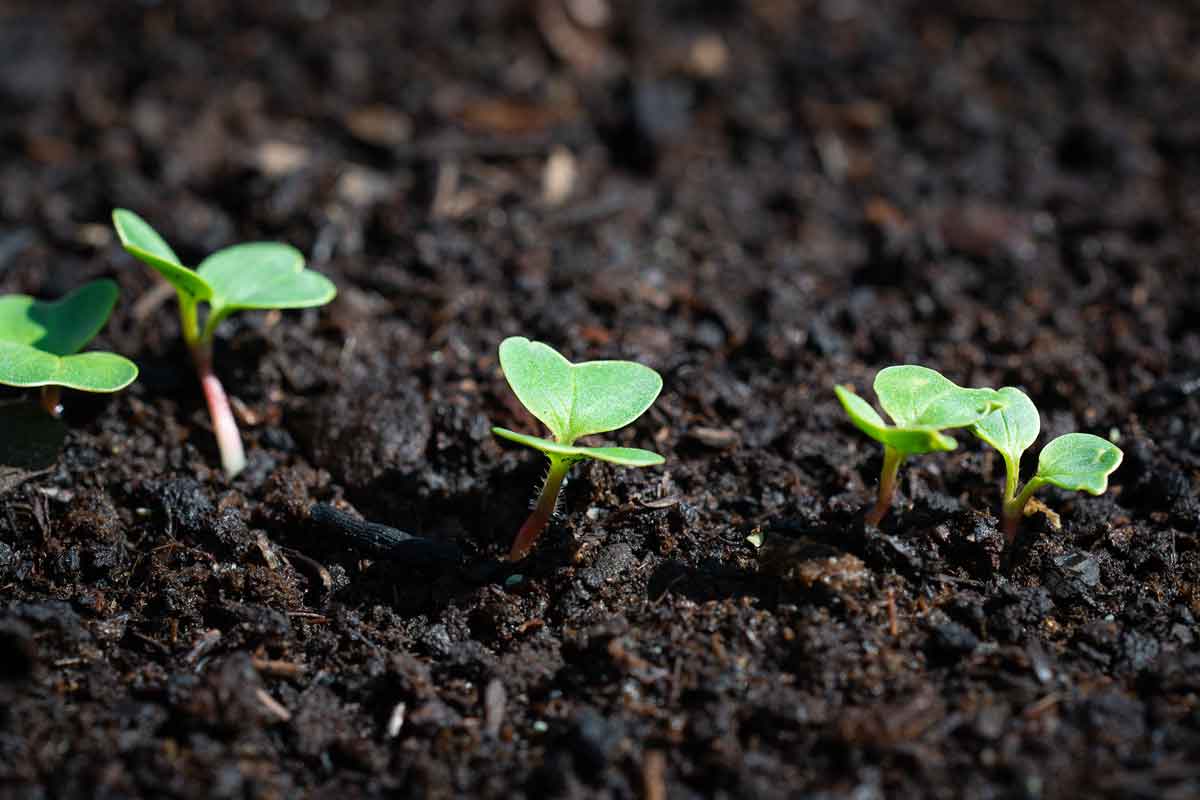 Radish Germination
Radish Germination
Cultivation, care and associations
The success of the radish, meaning obtaining crunchy, non-fibrous, sweet, and well-developed roots, depends on proper watering management! Between sowing and harvest, the soil must be kept moist with regular watering. This moisture allows for good radish development and prevents invasions of flea beetles, which proliferate in hot and dry weather.
Regular maintenance involves weeding and hoeing frequently. It is possible to mulch winter and Asian radishes, but it is unnecessary for monthly radishes; for these, it is better to weed regularly.
By staggering the sowings, you can enjoy crunchy radishes all year round, so I recommend sowing every 2 to 3 weeks.
Once the sowing has germinated, it is necessary to thin out. This operation involves removing the weakest plants to leave only the strongest ones every 3/4 cm for monthly radishes and 10 to 15 cm for turnip radishes.
In terms of companion planting, radishes get along with most other vegetables. You can:
- sow radishes and carrots in the same row and at the same time. This is a good combination that also helps to naturally space the carrot seeds. Once done, the harvest of the radishes will make room for the carrots to grow. The second advantage is that the row is visible quickly, allowing for weeding as soon as the radishes emerge. One variation is to sow a row of radishes and a row of carrots, separating them by about 5 centimetres (see photo below).
- Pairing radishes with watercress may enhance their flavour.
- Marrying them with spinach, lettuce, beans, peas, onions, and parsnips are other good companions for radishes.
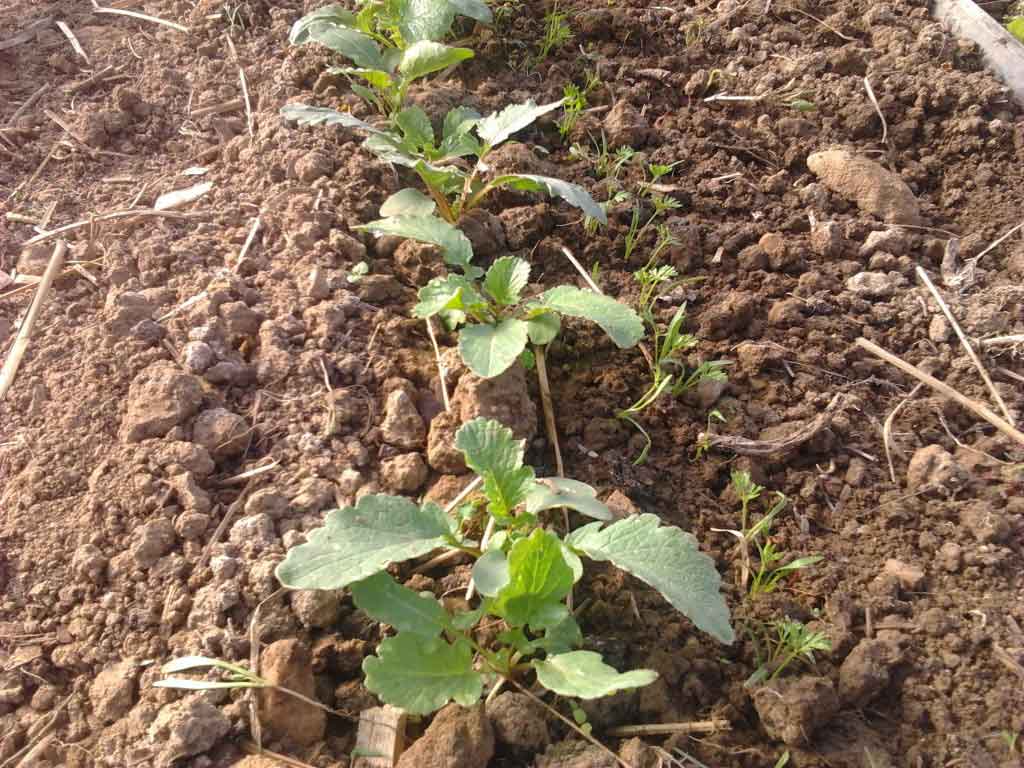
Sowing milestone for carrots and radishes
Radish pests
Radish Flea Beetle
Radish flea beetle, or more precisely those of the Brassicaceae family, is a small insect from the order of beetles whose hind legs are strong and allow the insect to jump quickly, like a flea. This insect prefers warm and dry environments, it is attracted by the scent of Brassicaceae and therefore of radish. Flea beetles devour the leaves of radishes, which limits the proper development of the roots; thus, an attack at an early stage will inevitably be detrimental to the harvest. For winter and Asian radishes, it is advisable to mulch, for example with wormwood branches (they dislike its scent), to prevent flea beetles from accessing their laying site, at the neck of the plant. Regular, daily watering helps to limit their presence. Finally, if the problem is recurring, consider placing a fine mesh insect net, starting from the sowing of the radish.
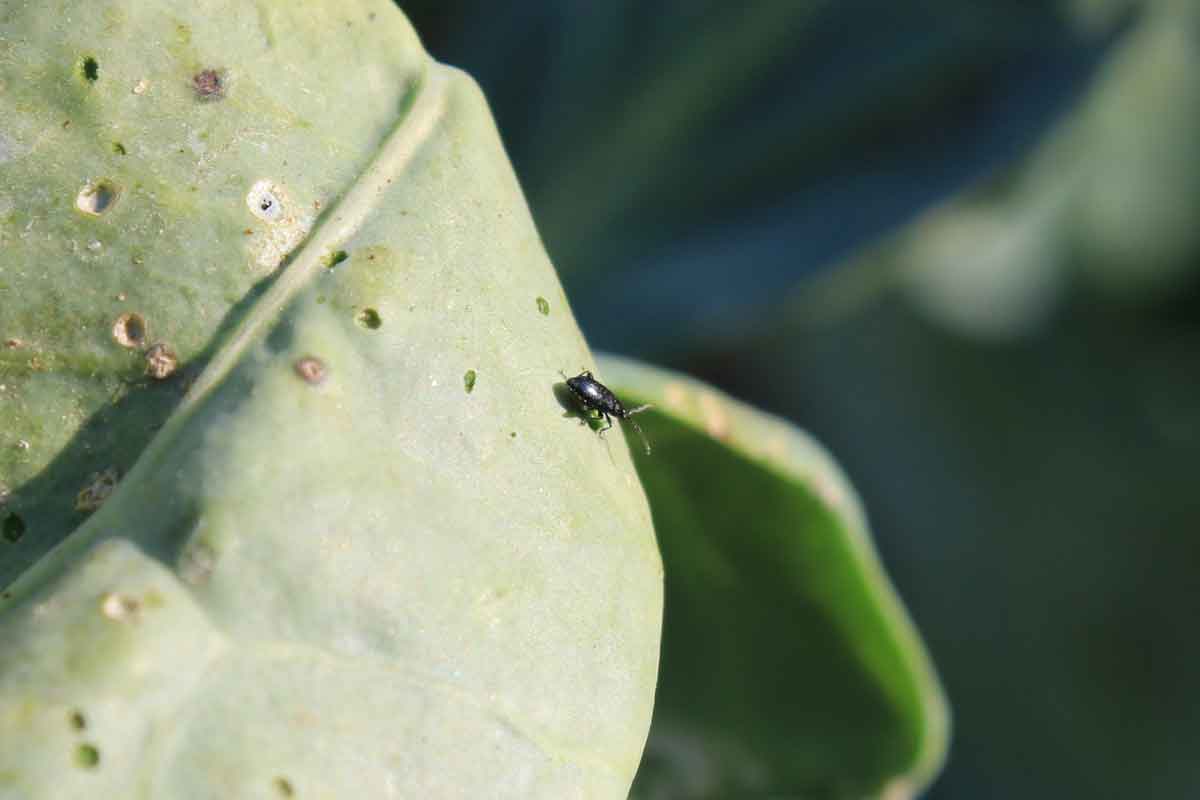
Flea beetle on cabbage leaf – Causes significant damage to radish leaves – Photo: A. Gourmelen
Harvest and preserve
The harvest of monthly radishes takes place 35 to 70 days after sowing. Regular harvesting, as needed, as soon as the radishes are formed but without letting them grow too large, helps to limit the risk of them becoming hollow and indigestible. Monthly or summer radishes can be stored for a few days in the refrigerator. It is preferable to cut the leaves, as the leaves may draw water from the root and soften it.
The harvest of turnip radishes and daikon occurs 4 to 5 months after sowing. They can be stored in a cellar or silo in the coldest regions. Harvest by gently lifting with a fork and let them dry on the soil before bringing them in. In milder regions, they can overwinter in the ground; cover the soil with straw to protect them.
Uses and nutritional benefits
The radish of all months is mainly consumed as a starter, raw, with buttered bread or cut and mixed into salads. Freshly picked leaves can be used in soups or broths.
The black radish is also consumed raw, in slices or grated and seasoned with salt or a sweet and vinegary marinade. It is usually peeled, but the skin can be eaten after being well scrubbed and washed. It arrives in season to enhance winter salads. If you find them too strong raw, they can also be cooked to enhance soups or mashed potatoes or other vegetables.
Daikon radish is generally eaten raw with salt, in slices, cut into fine julienne, or grated. It can also be consumed cooked, steamed, in soups, stir-fried, fried, etc. The sweet and vinegary marinade is essential for this radish!
Radish is a food rich in minerals and trace elements, magnesium, potassium, and sulphur compounds, which give it that spicy quality that stimulates the appetite. This radish is also rich in vitamins B9 and C. Winter radish has many virtues; it contains vitamin C and sulphur, as well as phosphorus and magnesium. It is anti-scurvy and diuretic and is recommended for people suffering from liver and gallbladder issues.
→ Discover Ingrid’s tips too: Zero waste, how to recycle radish tops?
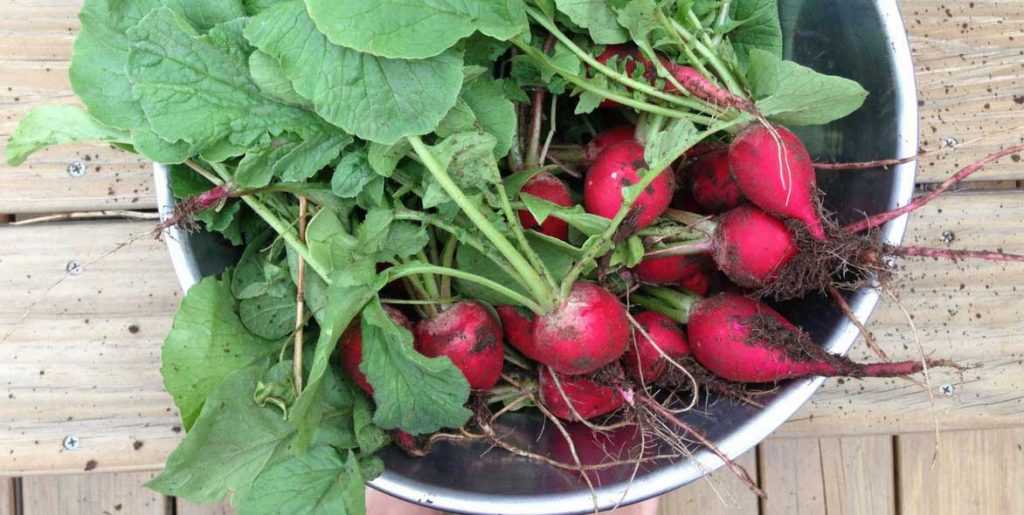
Useful resources
Discover:
- In our shop, our wide range of radishes, available as seeds or in strips.
- Advice sheet: How to choose your radishes?
Frequently asked questions
-
Does the monthly radish really get sown every month?
Yes and no! Radishes for all months are actually sown only from February to September. In February and March, depending on the region, it is even recommended to "force" them, meaning sowing them in a hotbed or greenhouse. From March onwards, they can be sown outdoors, ideally with a forcing tunnel. Then, from April to May, they are sown in the open garden.
Since the 18th century, Parisian market gardeners have sought to obtain radishes all year round. They were therefore sown throughout the year, in cold frames from October, then in hotbeds from November to March. They were then sown in a costière (raised bed against a wall) in April and May, and in open ground during the other months.
With the right equipment: frames, mats, and by building hotbeds, it is indeed possible to sow radishes for all months all year round.
-
My radishes aren't growing, why?
It often happens that radishes "bolt" because they are sown too closely together. Sow more sparsely by spacing the seeds well from the start, or thin them out to leave one radish every 3 to 4 cm (for monthly radishes) or one radish every 10 to 15 cm (for turnip radishes).
-
My radishes are spicy or hollow, why?
Radishes become hollow and pithy when they lack water: it is essential to carry out regular watering and, if possible, to keep the soil naturally cool. They can also become hollow towards the end of the harvest. My advice: as soon as they are ready to be harvested, do not delay!
-
Can I grow radishes on my balcony, in pots or containers?
Yes, it is possible, for small round or half-long radishes. In fact, it is quite an easy crop that delights children. To do this, fill a planter or a large pot with good potting soil and sow as you would in open ground. Make sure to keep the potting soil moist: it dries out more quickly in a pot.
- Subscribe!
- Contents
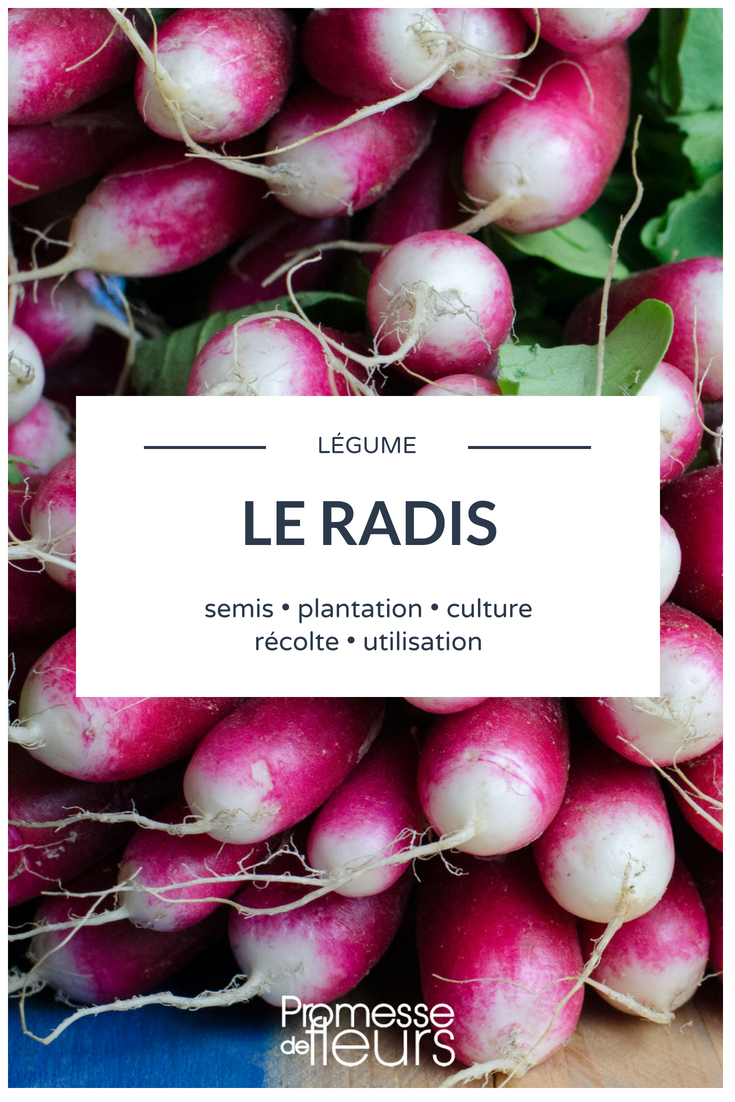































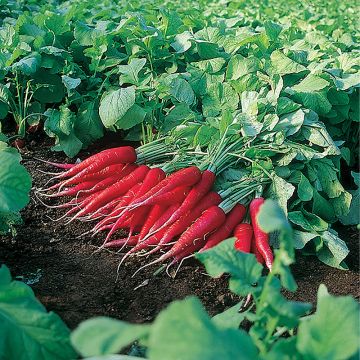

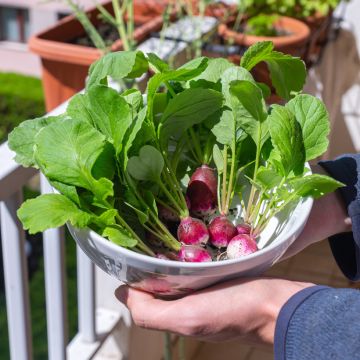
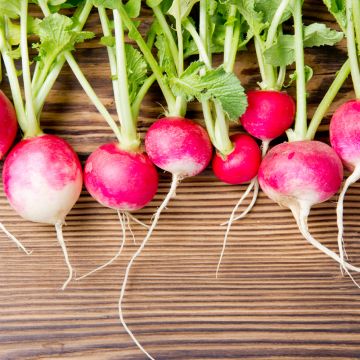


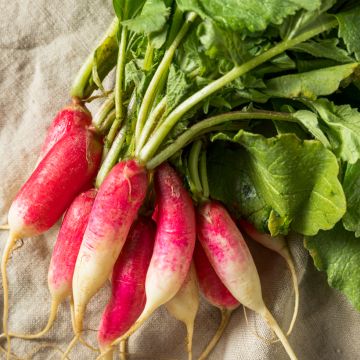

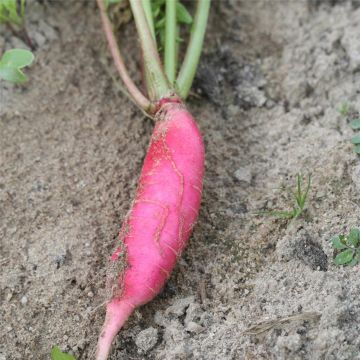
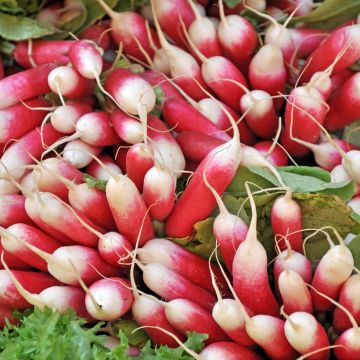
Comments